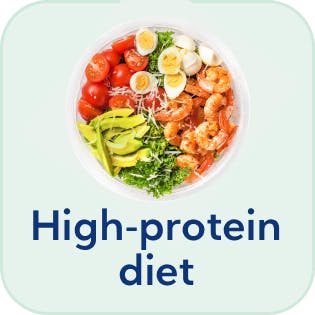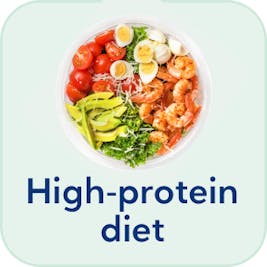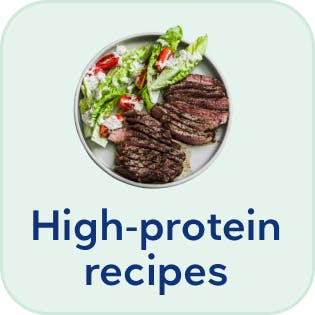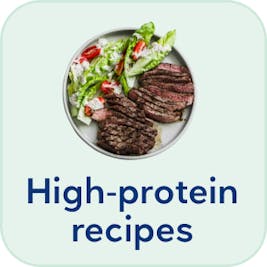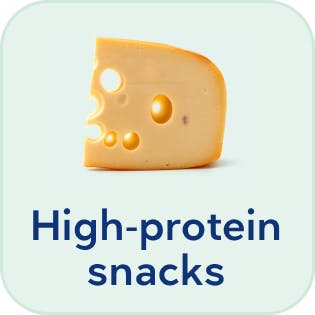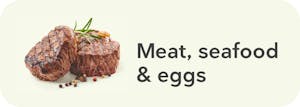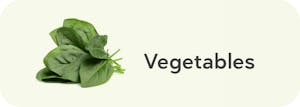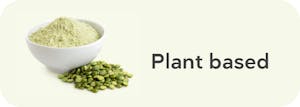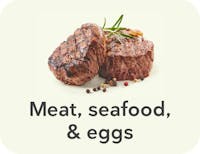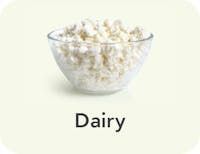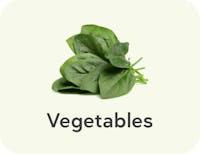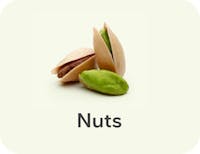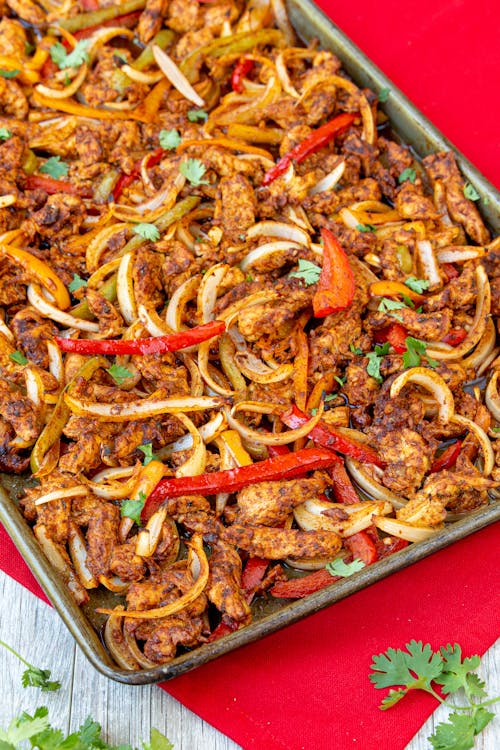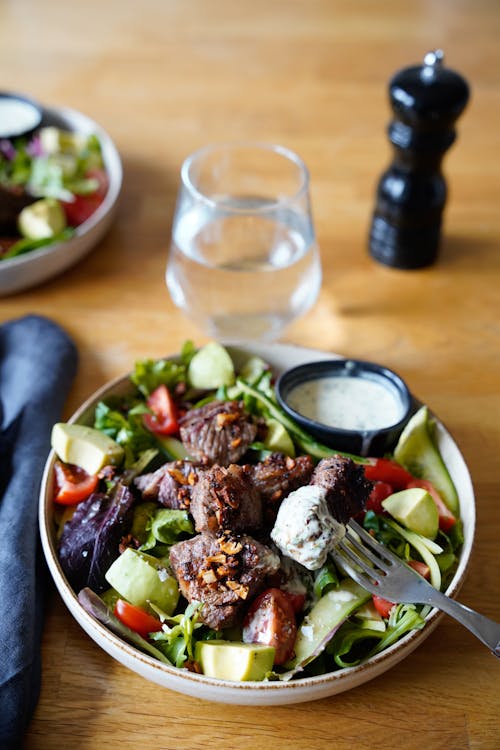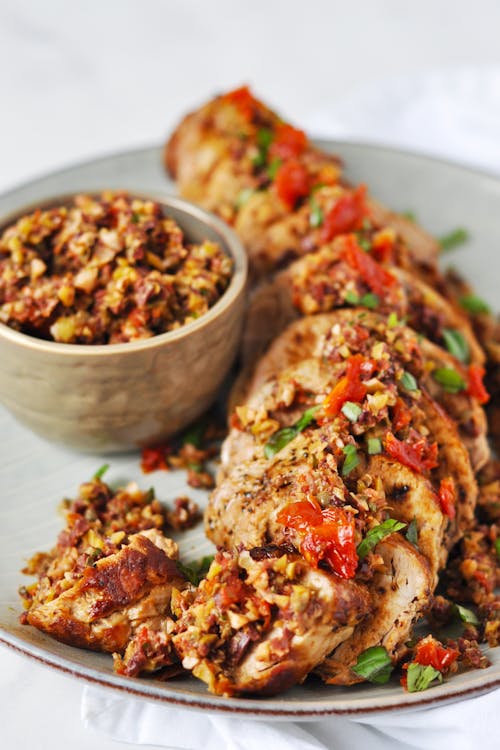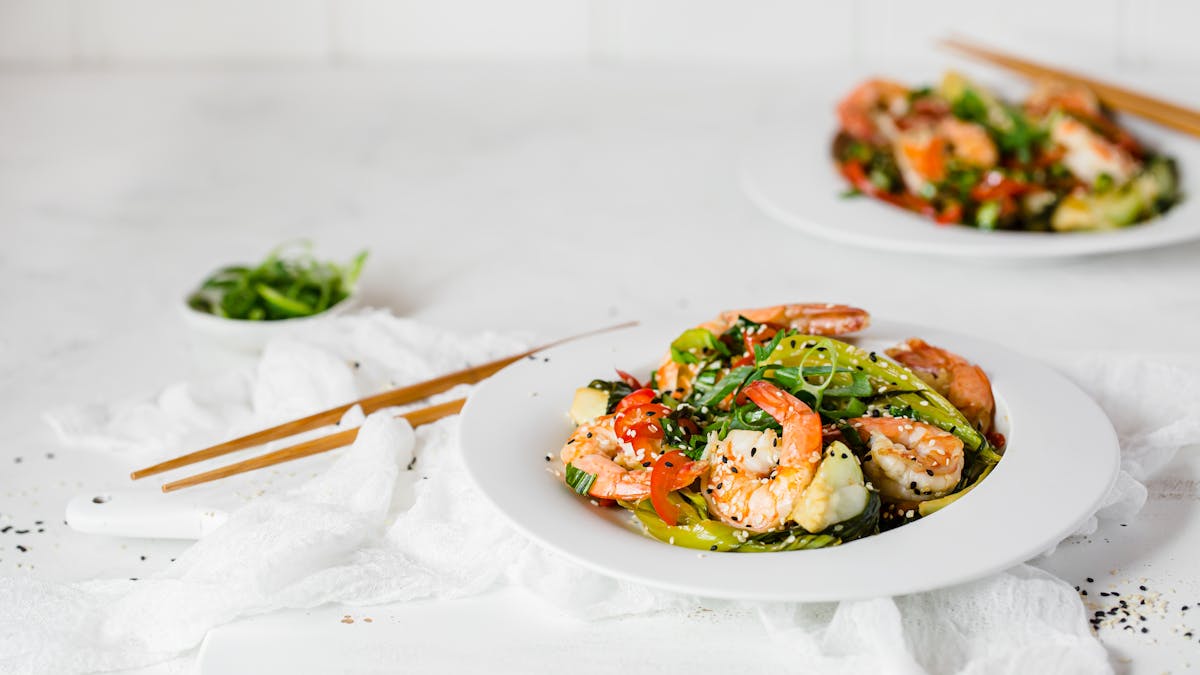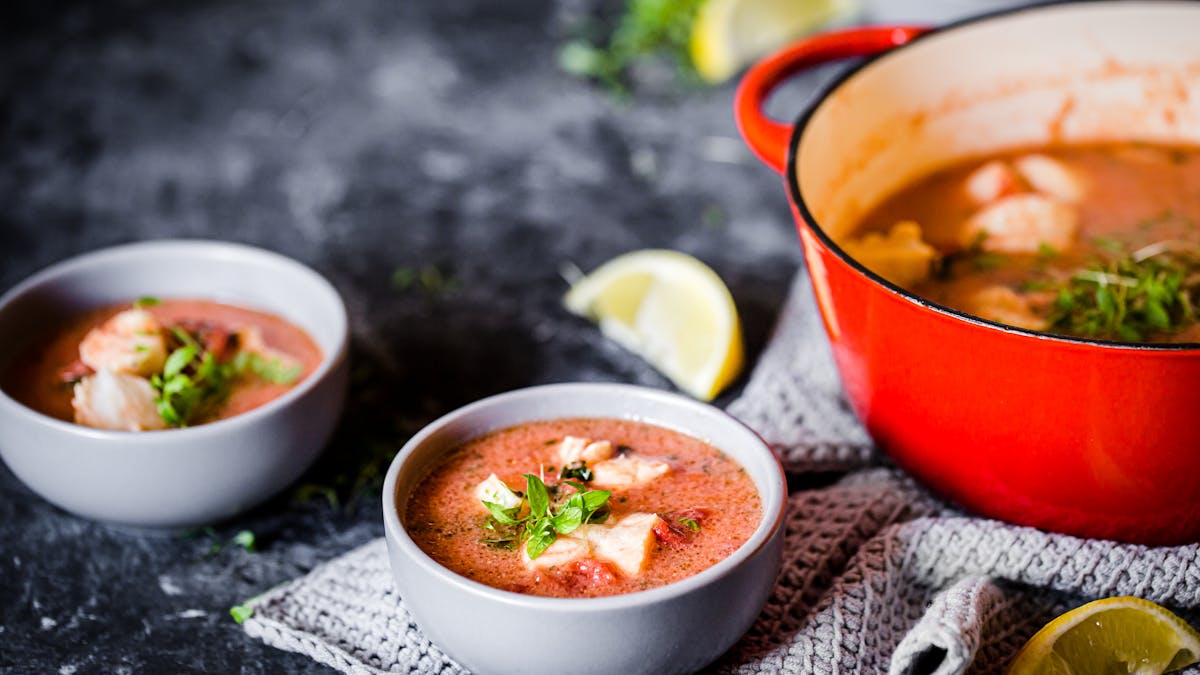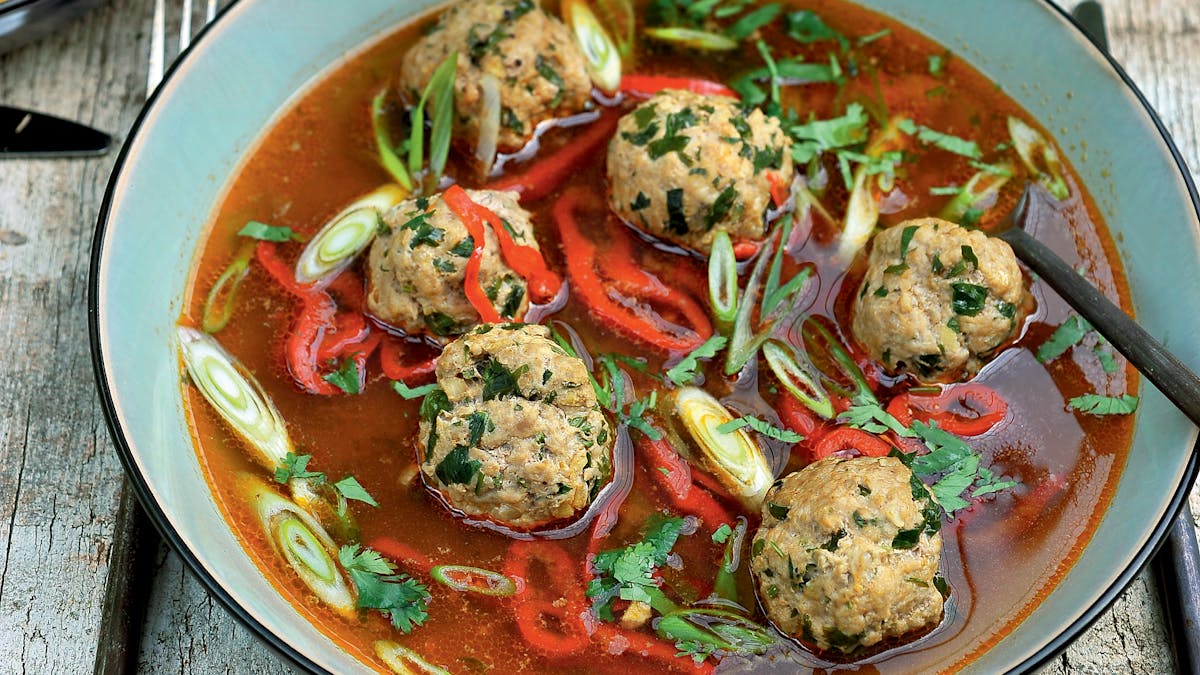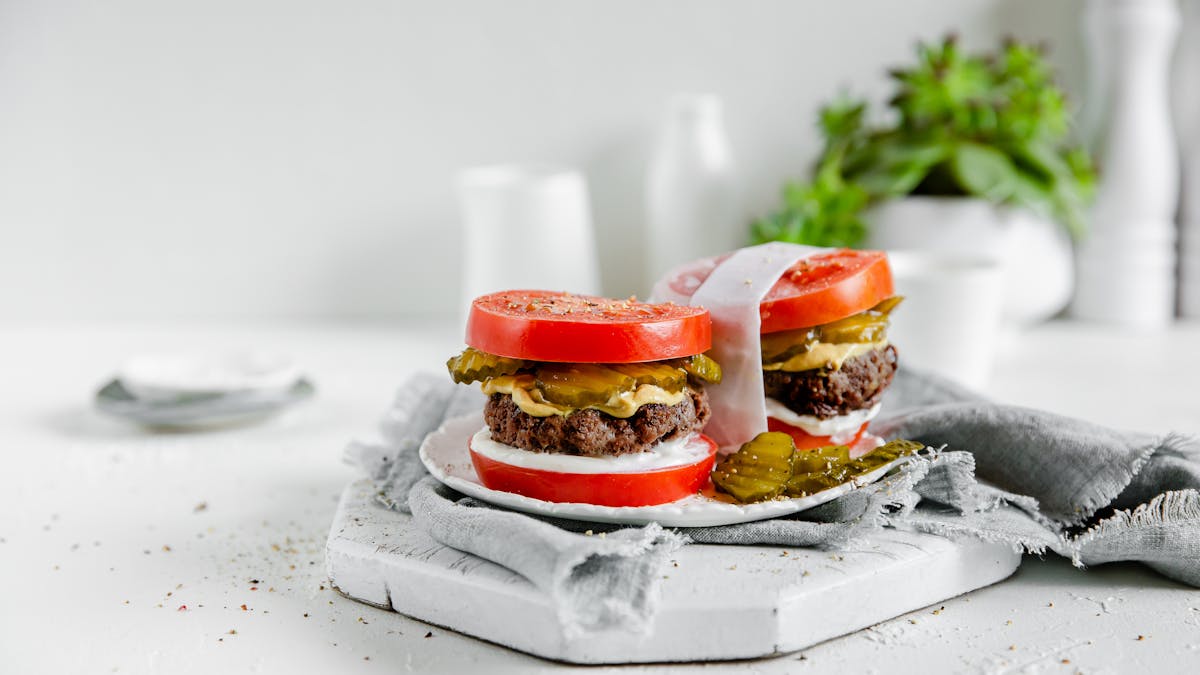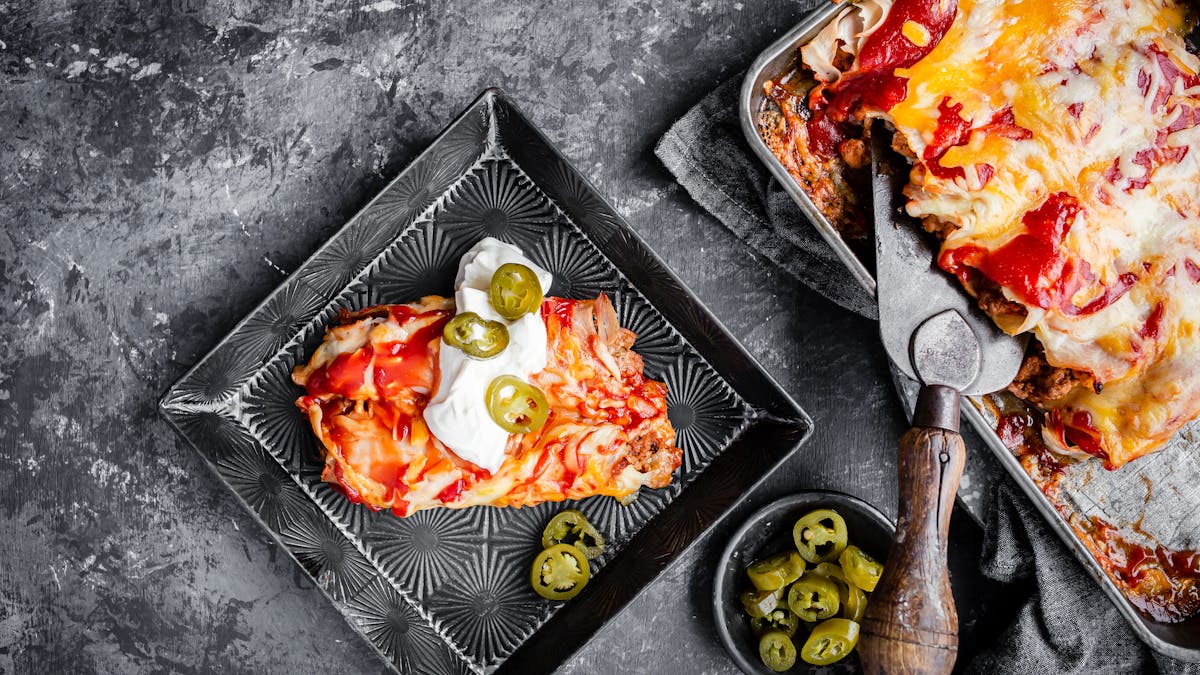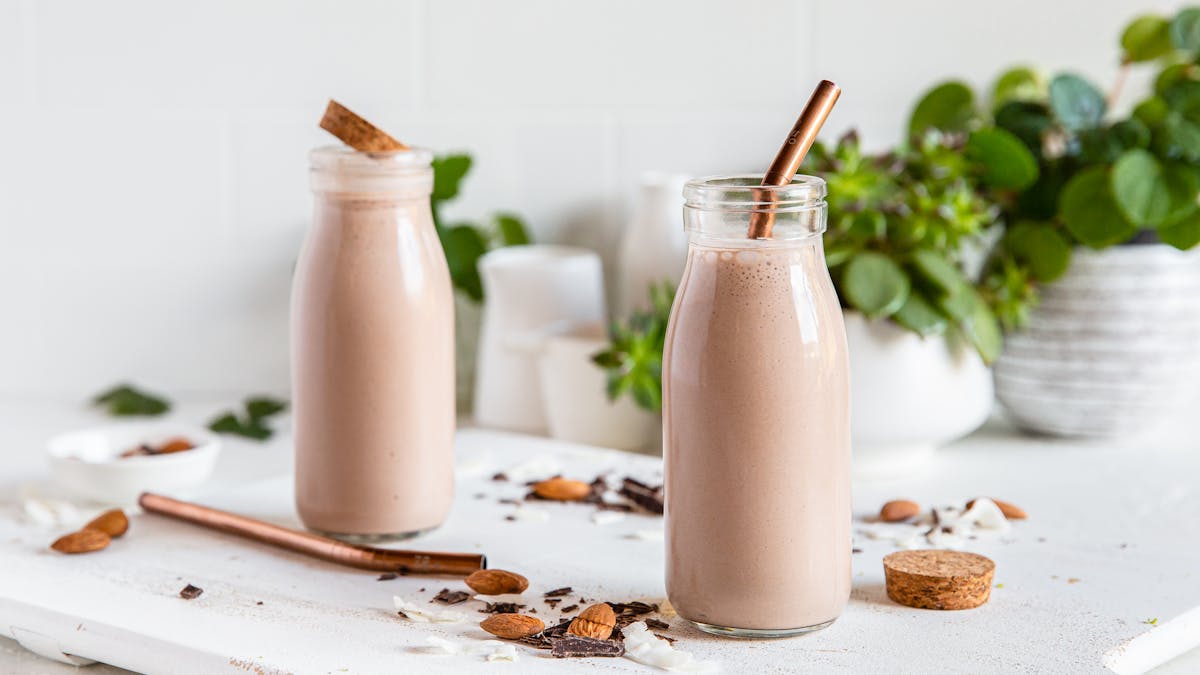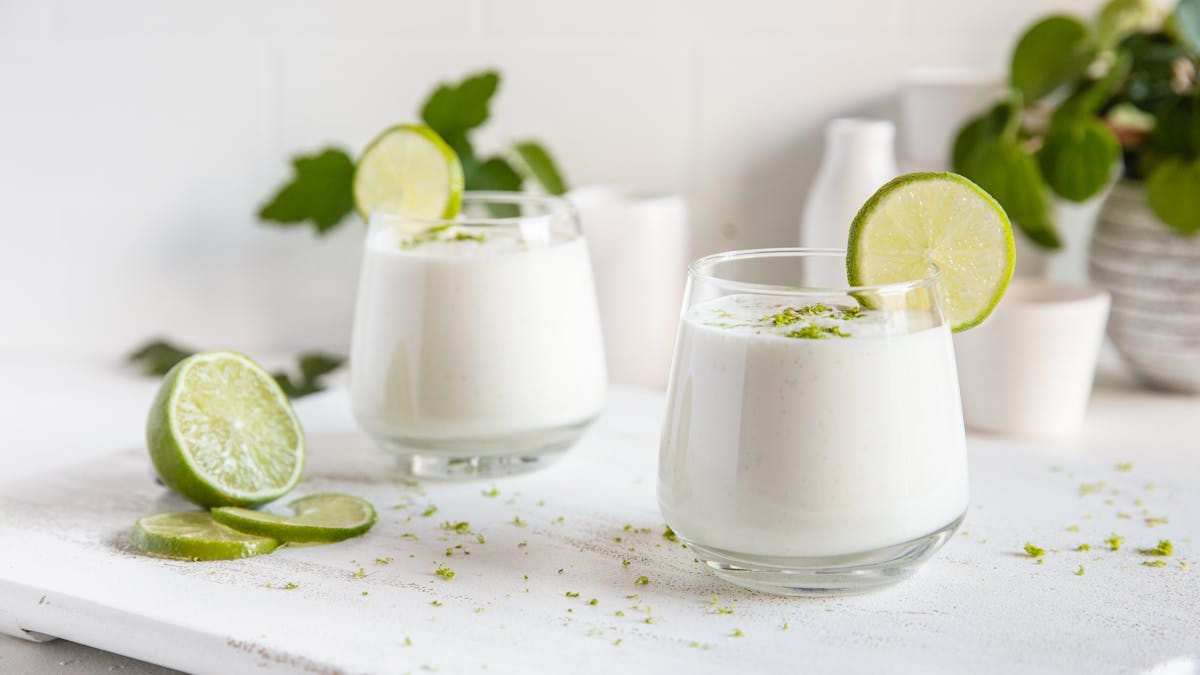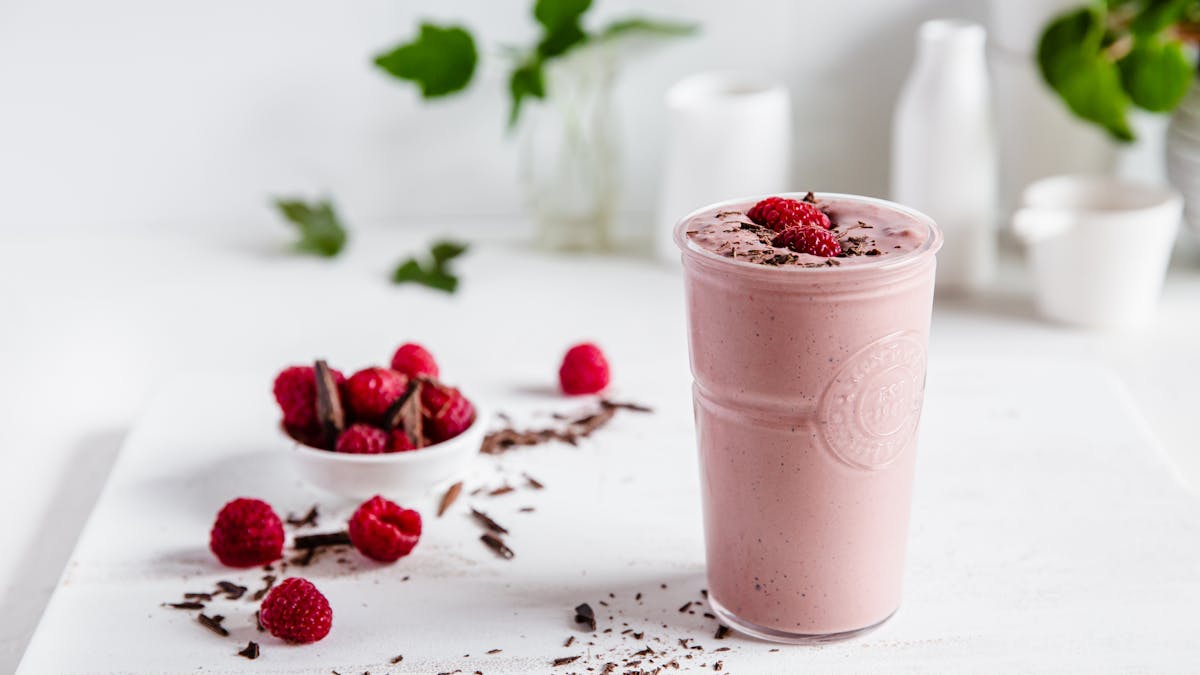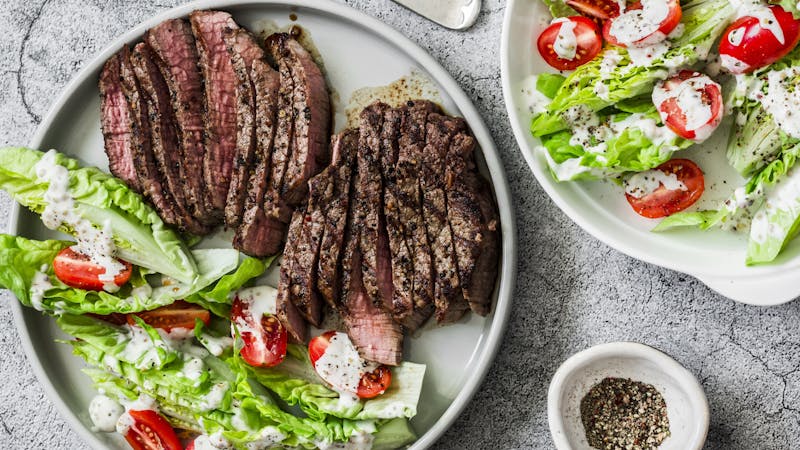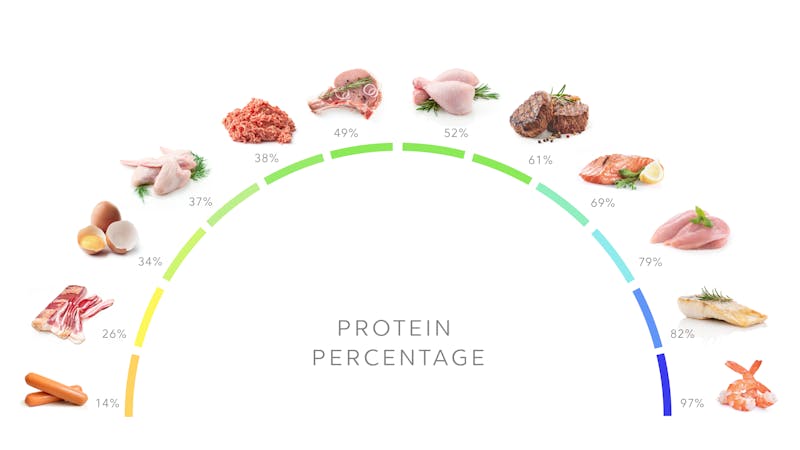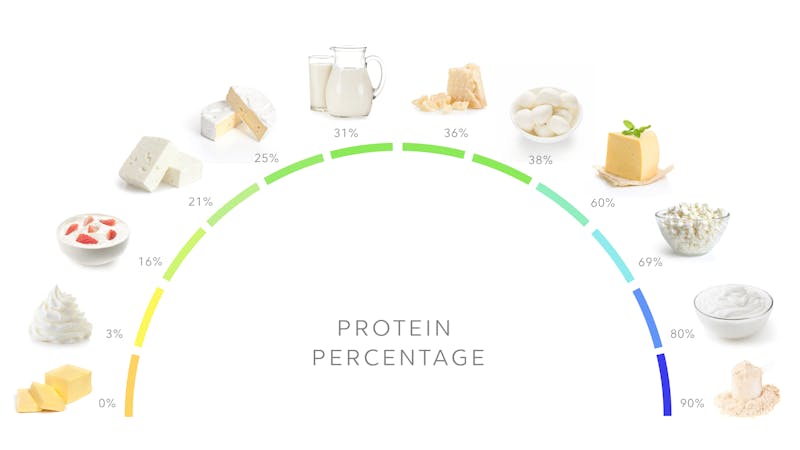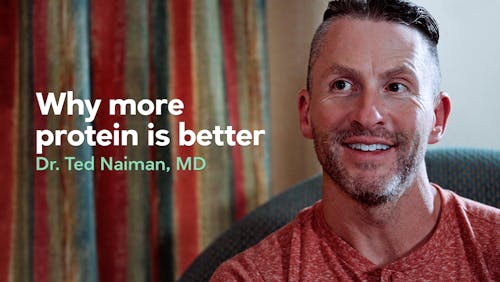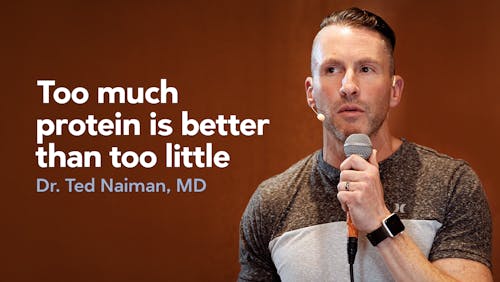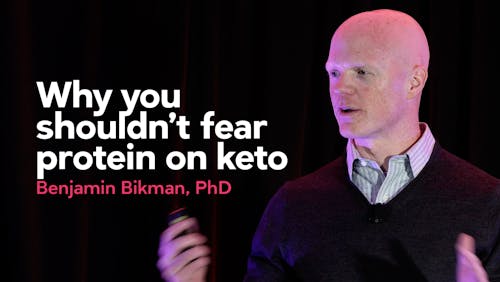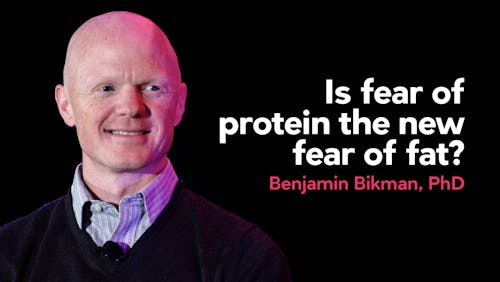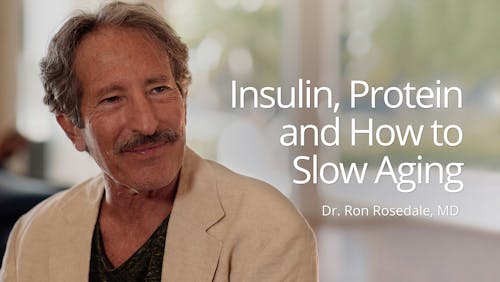Top 10 tasty ways to eat more protein and less fat
How can you get the best weight loss results on a keto or low-carb diet? For many, the answer is eating plenty of protein and eating enough fat without going overboard. Strong science shows that prioritizing protein can help you feel full, lose weight, and retain muscle.1
While many people lose weight and feel great on a low-carb, high-fat diet, this isn’t the case for everyone. Moreover, even those who have initial success with a high-fat approach may ultimately experience better weight loss by boosting protein and cutting back on fat.
If you think eating more protein and less fat means settling for bland, tasteless “diet” food — like skinless chicken breasts and steamed broccoli — don’t worry! A higher protein diet can be enjoyable, even delicious.
And to be clear, we’re not recommending a low-fat, low-carb diet. We’re just giving tips for how to cut back on fat and increase protein while keeping carbs low. Choose one, two, or several from our list.
In this guide, we’ll show you 10 ways to eat more protein and less fat – without sacrificing flavor or satisfaction.2
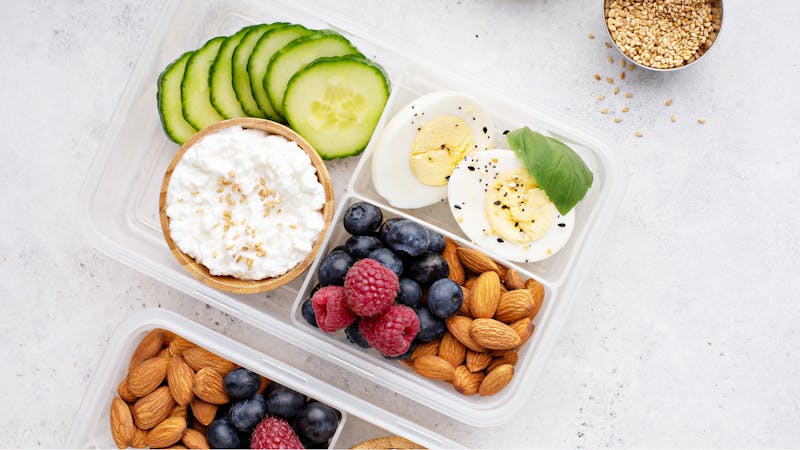



More high-protein guides
More high-protein guides
1. Choose meats with higher protein percentages
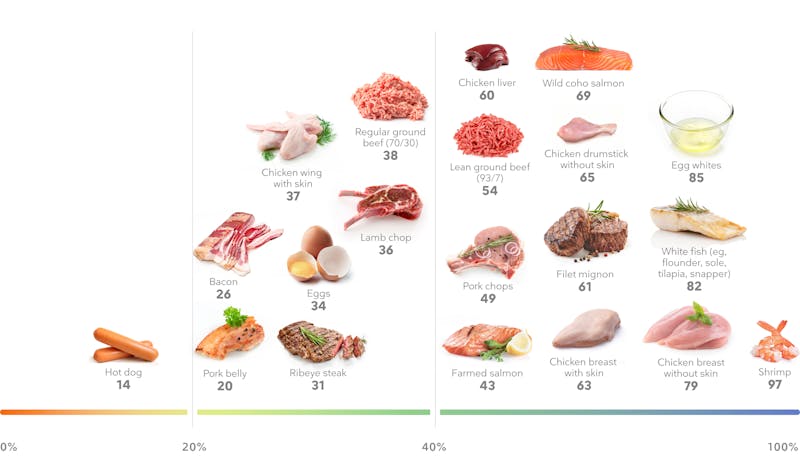



Fortunately, many meat and poultry options have high protein percentages:
- Chicken or turkey breast, thigh, drumstick, and wings (with or without skin)
- Ground chicken and turkey
- Chicken and beef liver
- Lean steaks, such as the eye of round, top sirloin, and filet mignon
- Lean or extra-lean ground beef or pork
- Pork tenderloin, chops, and roast
- Lamb tenderloin, leg, and shank
- Bison, buffalo, and other game (all cuts)
- Veal (all cuts)
What about beef ribeye, prime rib, pork ribs, and pork belly? Feel free to enjoy these fattier meats sometimes if they’re your favorites. But if your goal is to boost protein intake and cut back on fat, choose meats with higher protein percentages most of the time.
See the complete list of protein percentages (and the amount of protein you’ll get per serving) for poultry and red meat.
Here are a few tips for making leaner cuts of meat taste great:
- Use generous amounts of basil, cumin, rosemary, tarragon, or other herbs and spices in cooking.
- Intensify the flavors of meat, poultry, and fish with high-heat cooking methods like pan-searing, grilling, or broiling.
- Keep the skin on your poultry. Although you’ll get a bit more fat, eating the skin on your chicken or turkey can make your meal more enjoyable.
- Slow-cook tough, lean (and cheaper) cuts with moisture like broth, tomato juice, red wine, and seasonings.
Also, try our popular high-protein meat and poultry recipes:
High-protein meat and poultry recipes
2. Replace full-fat dairy products with lower fat options
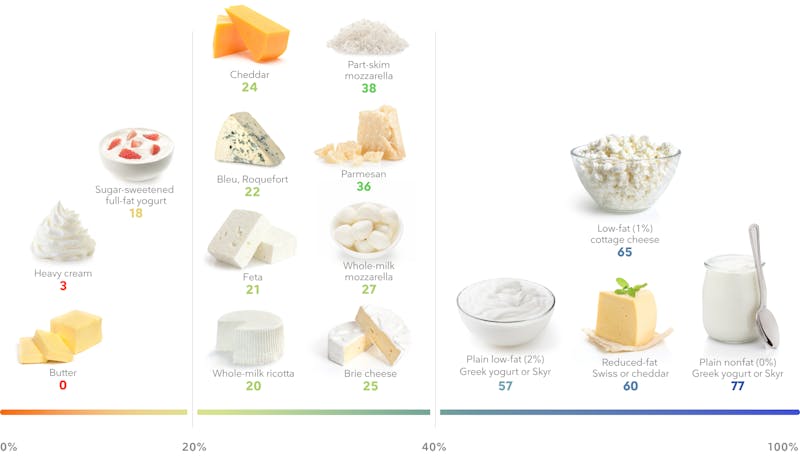



Low-fat Greek yogurt and cottage cheese meet both of these criteria. Plus, they pack more protein and less fat per calorie than full-fat varieties — for the same amount of net carbs.
Below are the amounts of protein, fat, and net carbs in five ounces (170 grams) or about three-quarters of a cup of plain Greek yogurt or Icelandic Skyr:5
- Nonfat: 18 to 20 grams of protein, zero grams of fat, and 5 grams of net carbs
- Low-fat (2%): 17 to 19 grams of protein, 3.5 grams of fat, and 5 grams of net carbs
- Full-fat (5%): 15 to 17 grams of protein, 9 grams of fat, and 5 grams of net carbs
- Triple-cream (9%): 14 to 16 grams of protein, 17 grams of fat, and 5 grams of net carbs
Compared to Greek yogurt, different types of cottage cheese vary less in their protein and fat content. Below are the amounts you’ll get per four ounces (114 grams) or about one-half cup of cottage cheese:
- Nonfat: 13 grams of protein, zero grams of fat, and 5 grams of net carbs
- Low-fat (2%): 13 grams of protein, 2 grams of fat, and 5 grams of net carbs
- Full-fat (4%): 13 grams of protein, 5 grams of fat, and 5 grams of net carbs
Although you may develop a taste for eating them “straight” over time, here are a few ways to improve the flavor of low-fat dairy products so you can start enjoying them right away:
- Mix one-half teaspoon of garlic powder, onion powder, salt, and chopped fresh chives (or other herbs) with low-fat Greek yogurt. Serve as a dip or dressing with sliced peppers, cucumbers, or other raw vegetables.
- Add cinnamon, vanilla, and an optional keto-friendly sweetener to nonfat or low-fat Greek yogurt.
- Make a parfait by alternating layers of cottage cheese with raspberries or blackberries.
- Top nonfat Greek yogurt or cottage cheese with a tablespoon of pumpkin seeds or hemp seeds.
In this video, Dr. Bret Scher discusses why including some low-fat foods in your diet doesn’t mean you’re following a low-fat diet:
3. Create a protein-packed omelet
Eggs are versatile, inexpensive, and a great protein source. Limited research suggests that including eggs in a higher protein diet may encourage fat loss and preserve muscle.6Omelets are one of the most popular ways to eat eggs and get that all-important protein. Unfortunately, when omelets are made with high-fat cheese and fried in lots of butter, they don’t provide as much protein per calorie.
For a higher protein, lower fat omelet, use reduced-fat cheese, more egg whites, and just a bit of fat for cooking.
For example, notice the difference in the protein percentage when you reduce the yolks, cheese, and butter.
An omelet made with three eggs and 1.5 ounces (45 grams) of cheese fried in 1.5 tablespoons of butter contains:
- 28 grams of protein (protein percentage: 20%)
- 48 grams of fat
- 3 grams of net carbs
- 560 calories
An omelet made with two eggs, three egg whites, and 1.5 ounces (45 grams) of reduced-fat cheese fried in 1 teaspoon of butter contains:
- 34 grams of protein (protein percentage: 41%)
- 20 grams of fat
- 3 grams of net carbs
- 330 calories
If you like meat in your omelet, add lean ham, steak, or poultry instead of sausage or bacon.
Finally, feel free to include spinach, mushrooms, or any other low-carb vegetables for a bit more protein and very few carbs.
High-protein vegetables
Although vegetables don’t have a lot of protein compared to eggs, meat, and other foods, many of them provide a lot of protein per calorie. Learn more in our guide to the Best high-protein vegetables.
4. Eat more fish and shellfish
Upping your seafood intake is an easy way to get more protein and less fat. Plus, fish and shellfish have great flavors that range from delicate and subtle to rich and robust.Which types are best? Since nearly all seafood is high in protein yet low in fat and carbs, the choice is up to you.
However, if you want to maximize protein per calorie, shrimp, crab, and lobster are your best shellfish options. Indeed, more than 85% of their calories come from protein. Whitefish — halibut, flounder, and tilapia, among others — also have impressive protein percentages of around 80% or more.
Even fatty fish like salmon and sardines provide more protein and less fat than many types of meat. If possible, go for wild-caught salmon, which contains far less fat than farmed salmon.
Although seafood can be pricey, canned fish and shellfish are economical and convenient. As a bonus, all canned salmon is wild-caught rather than farmed.
Bottom line? Select seafood based on personal preference, availability, and your budget. The only types to avoid or strictly limit are fish very high in mercury, such as King mackerel, bigeye tuna, swordfish, and shark.
If you like, add your favorite herbs, some Greek yogurt, or a squeeze of lemon to enhance flavor. Adding a small amount of mayonnaise or a vinaigrette to canned tuna can improve taste and reduce dryness.
Also, be sure to try our delicious high-protein seafood recipes:
High-protein seafood recipes
5. Opt for high-protein, lower fat cheeses
Cheese is a tasty and filling keto favorite. Although cheese is high in saturated fat, it seems to have neutral or possibly beneficial effects on heart health.7However, cheese usually gets most of its calories from fat rather than protein.
For example, one ounce (30 grams) of cheddar cheese — the size of a pair of dice — has about 7 grams of protein, 9 grams of fat, 0.5 grams of carbs, and a protein percentage of 24%.
Because cheese is easy to overeat and doesn’t provide a lot of satiety per calorie, you can end up eating quite a bit before you start to feel full.
Is nonfat cheese the answer? The truth is that the taste and texture of nonfat cheese bear little resemblance to regular cheese. The good news is, opting for reduced-fat cheese can be a flavorful way to get more protein with less fat.
A 2-ounce (60-gram) serving of reduced-fat cheddar cheese has about 14 grams of protein, 4 grams of fat, 1 to 2 grams of carbs, and a protein percentage of 56%.
So, you’ll get about double the protein, less than half the fat, and only 1 more gram of carbs in two ounces of reduced-fat cheese compared to one ounce of regular cheese.
Another option is part-skim mozzarella cheese, which has a protein percentage of 39%. Two ounces provide 14 grams of protein and 9 grams of fat.
If you don’t like reduced-fat cheese, go for Parmesan, which has 10 grams of protein and 7 grams of fat per ounce. Or enjoy a small amount of your favorite higher fat cheese, and follow the other tips in this guide to add more protein and less fat to your diet.
6. Use lean ground meat or poultry whenever possible
Ground meat is versatile, convenient, and generally less expensive than steaks and roasts. On the other hand, it often contains more fat and less protein compared to other meats.For instance, 3.5 ounces (100 grams) of regular ground beef has about 23 grams of protein, 19 grams of fat, and a protein percentage of 38%. This is still a good option, although you’ll get more protein per calorie if you choose leaner ground beef.
The same amount of regular ground pork has about 22 grams of protein, 31 grams of fat, and a protein percentage of 25%. It provides far less protein and more fat than leaner ground pork.
Make a simple switch to lean or extra-lean ground meat or poultry to get more protein with less fat:
- Ground pork, extra-lean:
29 to 31 grams of protein and 6 grams of fat per serving (65% protein) - Ground beef, extra-lean:
25 to 27 grams of protein and 9 grams of fat per serving (54% protein) - Ground chicken breast:
30 to 32 grams of protein and 3 grams of fat per serving (79% protein) - Ground turkey breast:
30 to 32 grams of protein and 2 grams of fat per serving (84% protein)
How can you make lean ground meat tastier?
Generously season it with salt and pepper, garlic, and onion. Make spicy chili with chili powder and hot sauce or cayenne pepper for an extra kick. And try our flavorful high-protein recipes featuring ground meat below:
High-protein ground meat recipes
7. Start your day with a protein shake instead of fatty coffee
Coffee made with MCT oil, butter, or lots of heavy cream is a nearly carb-free breakfast. The bad news is, it’s also virtually protein-free.Trading a fatty coffee for a protein shake is an easy, tasty move that can dramatically increase your protein intake and lower your fat intake. A protein shake also requires little time to prepare and consume, unlike many other breakfast options.
Whey protein shakes are a popular choice. Research demonstrates that whey protein may help you lose fat, retain muscle, and improve blood sugar control.8 Some protein powders are made from egg whites, which may also promote fat loss and muscle retention.9And early evidence suggests that plant-based protein shakes may help improve body composition.10
At Diet Doctor, although we encourage you to choose minimally processed foods most of the time, a protein shake may be a better option than a fatty coffee for losing weight and retaining muscle.
A whey or plant-based protein shake provides at least 20 grams of protein (although you can increase this amount by adding more protein powder) and little to no fat. Look for types without sugar or other additives to keep carbs low. Artificially sweetened protein powders are fine, or feel free to add your favorite sugar-free sweetener, berries, vanilla, or cinnamon.
By the way, we aren’t suggesting that you give up your morning coffee, but we do recommend drinking it black or with a little bit of milk or cream if weight loss is your primary goal.11
Check out our quick and easy protein-packed shake recipes below.
8. Trade nuts for snacks that provide more protein per calorie
Nuts are delicious, nutritious, and relatively low in carbs. But they’re not a great high-protein snack option.For starters, nuts are only 4 to 18% protein, depending on the type. Between 77% (peanuts) to 94% (macadamia nuts) of the calories in nuts come from fat.
Additionally, it can be tough to stop eating nuts once you start, and the calories can add up quickly.12
If you need a snack between meals, choose one that provides plenty of protein per calorie. Doing this can help you feel full and take in fewer calories than you’d get from nuts.
One ounce (30 grams) of almonds has about 6 grams of protein (14%) and 15 grams of fat. The same serving size of pecans has 2.6 grams of protein (5%) and 20 grams of fat.
Here are some tasty snack options with more protein and less fat compared to nuts:
- Zero-sugar jerky or meat sticks (such as beef, turkey, or bison): 15 grams of protein (75%), 1.5 grams of fat, and 1 gram of net carbs per ounce (30 grams)
- Ham or turkey roll-ups: Place one slice of reduced-fat cheese on top of one slice (1 ounce/30 grams) of sliced meat and roll up. One roll-up contains 14 grams of protein (65%), 2 grams of fat, and 1 gram of net carbs per ounce (30 grams).
- Low-fat cottage cheese: 13 grams of protein (58%), 2.5 grams of fat, and 5 grams of net carbs per half-cup (113 grams)
- Dry-roasted edamame: 14 grams of protein (45%), 6 grams of fat, and 3 grams of net carbs per ounce (30 grams)
For more ideas, see our complete guide to the 21 best high-protein snack options.
9. Make high-protein processed meat choices
Processed meats are tasty, convenient, and inexpensive. They’re popular among many people who follow keto or low-carb diets. And claims that eating processed meats may lead to health problems are based on very weak observational evidence.But many types – such as bacon, salami, and sausage — are low in protein and high in fat. Their protein percentages are well below 30%. Even liverwurst, which is typically considered healthy, is only 17% protein. The overwhelming majority of calories in these meats come from fat — not protein.
Fortunately, some deli and prepared meats offer more protein and less fat. Plus, they taste great and are low in carbs. Still, it’s important to read ingredients and nutrition facts labels, as some manufacturers add sugar and carby fillers to their meats.
Replace high-fat processed meats with the tasty high-protein winners below:
- Canadian bacon (extra-lean ham): 77% protein
- Lean turkey, chicken, roast beef, or ham deli meat: 60 to 80% protein 13
- Pastrami: 60% protein
- Prosciutto: 54% protein
- Chicken or turkey sausage: 46% protein
- Turkey bacon: 45% protein
10. Switch to protein-rich desserts
Keto treats and desserts seem to provide the best of both worlds. You get all of the sweetness for a fraction of the carbs in the original version. Yet, most of these sweet treats provide little protein and a lot of fat. “Fat bombs” are named very appropriately!Calories from these desserts can add up quickly. Additionally, the sweet-fat combination can sometimes make it difficult to stop at “just one.”
Avoiding treats altogether is one option, and it may be the right one for you if you find that sweet tastes trigger cravings or hunger.
However, if you enjoy eating a small portion of dessert occasionally, try one of these high-protein, low-carb options:
High-protein desserts
And here is a quick, easy, high-protein ice cream recipe with no added sweetener, courtesy of the Diet Doctor himself:
“I’ve made ice cream several times using whey protein and frozen berries, with a small amount of milk. Just put it in a mixer and blend for one minute. Done and delicious. 70% protein and high fiber, too” – Dr. Andreas Eenfeldt
Summary
Eating more protein and less fat may help you achieve and maintain a healthy weight and body composition.Many high-quality, tasty, filling protein choices can create a versatile and varied eating experience. Try mixing and matching different protein sources.
Together, these nutritious, high-protein foods can provide maximum satiety, enjoyment, and satisfaction for long-term weight loss success.
Learn more about protein
Top 10 tasty ways to eat more protein and less fat - the evidence
This guide is written by Franziska Spritzler, RD, Dr. Bret Scher, MD and was last updated on November 15, 2022. It was medically reviewed by Dr. Bret Scher, MD on June 11, 2021.
The guide contains scientific references. You can find these in the notes throughout the text, and click the links to read the peer-reviewed scientific papers. When appropriate we include a grading of the strength of the evidence, with a link to our policy on this. Our evidence-based guides are updated at least once per year to reflect and reference the latest science on the topic.
All our evidence-based health guides are written or reviewed by medical doctors who are experts on the topic. To stay unbiased we show no ads, sell no physical products, and take no money from the industry. We're fully funded by the people, via an optional membership. Most information at Diet Doctor is free forever.
Read more about our policies and work with evidence-based guides, nutritional controversies, our editorial team, and our medical review board.
Should you find any inaccuracy in this guide, please email andreas@dietdoctor.com.
Systematic reviews of randomized controlled trials — considered the strongest type of evidence — show that higher protein diets tend to help people lose weight, maintain a higher metabolic rate, and prevent muscle loss:
Journal of the American College of Nutrition 2004: The effects of high protein diets on thermogenesis, satiety and weight loss: a critical review [systematic review of randomized trials; strong evidence]
Nutrition Reviews 2016: Effects of dietary protein intake on body composition changes after weight loss in older adults: a systematic review and meta-analysis [strong evidence]
The American Journal of Clinical Nutrition 2012: Effects of energy-restricted high-protein, low-fat compared with standard-protein, low-fat diets: a meta-analysis of randomized controlled trials [strong evidence]
Nutrition Reviews 2016: Effects of dietary protein intake on body composition changes after weight loss in older adults: a systematic review and meta-analysis [strong evidence] ↩
We obtained nutrition information from FoodData Central, the USDA’s nutrient profile database. Note that these are based on average values. ↩
Protein is made up of building blocks known as amino acids. Unlike most plant foods, meat and other animal foods provide the nine essential amino acids – which your body can’t make on its own – in the amounts you need to survive and thrive. Your body can recycle and reuse some of these amino acids, but most of them must be replenished by your diet on a daily basis:
International Journal for Vitamin and Nutrition Research 2011: Protein turnover, ureagenesis and gluconeogenesis [overview article; ungraded] ↩
Nutrients 2019: Role of calcium and low-fat dairy foods in weight-loss outcomes revisited: Results from the randomized trial of effects on bone and body composition in overweight/obese postmenopausal women [moderate evidence]
Journal of Nutrition 2011: Increased consumption of dairy foods and protein during diet- and exercise-induced weight loss promotes fat mass loss and lean mass gain in overweight and obese premenopausal women [randomized trial; moderate evidence]
Obesity Research 2004: Calcium and dairy acceleration of weight and fat loss during energy restriction in obese adults[randomized trial; moderate evidence] ↩
Values may vary slightly among different brands. Check labels for added sugar or modified food starch, which can increase carb levels. ↩
In a 12-week study of overweight adults, participants who consumed a higher protein diet with three eggs per day lost weight and retained more lean mass than participants who avoided eggs and consumed less protein:
Nutrients 2018: Effects of a high-protein diet including whole eggs on muscle composition and indices of cardiometabolic health and systemic inflammation in older adults with overweight or obesity: a randomized controlled trial
[moderate evidence] ↩In one study, overweight women experienced a 5% increase in high-density lipoprotein (HDL) cholesterol and other improvements in health markers after eating a high-cheese diet for just two weeks:
The American Journal of Clinical Nutrition 2015: Diets with high-fat cheese, high-fat meat, or carbohydrate on cardiovascular risk markers in overweight postmenopausal women: a randomized crossover trial [moderate evidence]
Two reviews of the evidence to date suggest that high-fat dairy may help protect, rather than harm, heart health:
Foods 2020: Dairy fat and cardiovascular health [overview article; ungraded]
Advances in Nutrition 2019: Effects of full-fat and fermented dairy products on cardiometabolic disease: Food is more than the sum of its parts [overview article; ungraded] ↩
This has been shown in both acute and long-term studies:
Journal of the American College of Nutrition 2018: Whey protein supplementation improves body composition and cardiovascular risk factors in overweight and obese patients: A systematic review and meta-analysis [strong evidence]
The Journal of Nutritional Biochemistry 2017: High-energy breakfast based on whey protein reduces body weight, postprandial glycemia and HbA 1C in Type 2 diabetes [randomized controlled trial; moderate evidence] ↩
The British Journal of Nutrition 2019: Comparison of whole egg v. egg white ingestion during 12 weeks of resistance training on skeletal muscle regulatory markers in resistance-trained men [moderate evidence] ↩
Nutrients 2019: Differential responses of blood essential amino acid levels following ingestion of high-quality plant-based protein blends compared to whey protein: A double-blind randomized, cross-over clinical trial [moderate evidence]
Sports 2019: The effects of whey vs. pea protein on physical adaptations following 8 weeks of high-intensity functional training (HIFT): A pilot study
[non-controlled study; weak evidence]However, unlike whey or egg protein, plant proteins are low in one or more of the essential amino acids your body needs. So make sure to combine plant proteins with other protein sources to get adequate amounts of all nine essential amino acids.
Nutrients 2020: Plant proteins: Assessing their nutritional quality and effects on health and physical function [review article; ungraded]
Nutrition Reviews 2019: Maximizing the intersection of human health and the health of the environment with regard to the amount and type of protein produced and consumed in the United States [review article; ungraded] ↩
Many individuals report anecdotal evidence of greater brain clarity or mood benefits from fatty coffee in the morning, but we are not aware of any scientific evidence to support these experiences. ↩
According to a review of randomized trials, people who carry excess weight often end up taking in more calories when they eat nuts:
Critical Reviews in Food Science and Nutrition 2018: Effect of nuts on energy intake, hunger, and fullness, a systematic review and meta-analysis of randomized clinical trials [strong evidence] ↩
Extra-lean meat without added sugar or fillers may have protein percentages as high as 80% ↩



